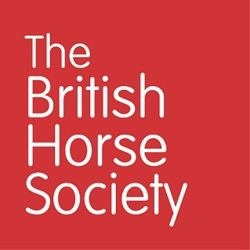| 1. Understand the roles and responsibilities of a coach |
1.1 Describe the roles of a coach |
Roles to include;
- Coach children and adults to improve their riding ability and horse care knowledge
- Coach a variety of clients from beginner riders to stage 2 level riders and riders preparing for low level competitions
|
Discussion |
| 1.2 Explain the responsibilities of a coach |
Responsibilities to include;
- Promoting equestrianism and horse welfare in a positive way (social licence to operate)
- Horse welfare
- Legal responsibilities
- Health and Safety
- Insurance
- First aid
- Safeguarding
- Data protection
- Equality, diversity and inclusion
- Customer care
- Working with or referring to other professionals for example, saddle fitters, vets, coaches, nutritionists, physiotherapists and trainers
- Continuous professional development (CPD)
|
Discussion |
| 2. Be able to coach safely |
2.1 Demonstrate regard for safety |
Coaches must demonstrate safe coaching in all sessions, including consideration of:
- Suitable for the lesson and appropriate to needs of the riders
- Content of the lesson is suitable for the ability and fitness of horse and rider
- Welfare of horse(s)
- Meeting legal requirements
- Maintain safety of self and others throughout the lesson including safeguarding
- Awareness of potential risks
|
Observation |
| 3. Be able to demonstrate lesson management skills |
3.1 Demonstrate effective communication skills |
Effective – relates to each lesson. Communication must be effective in both coaching sessions.
Communication skills to include;
- Verbal communication; volume, tone, language, terminology
- Non-verbal communication; gestures, body language, demonstrations, positioning
- Rapport
- Motivation
|
Observation |
| 3.2 Demonstrate time management skills |
Time management to include;
- Progression of lesson
- Adapting timings to meet the needs of the horse and rider
This must be shown in both coaching sessions
|
Observation |
| 4. Be able to coach a flatwork lesson |
4.1 Produce a lesson plan |
Lesson plan to include;
- One rider up to Novice level dressage
- 30-minute flatwork lesson
- Risk assessment
- Aims and objectives
- Equipment
- Timings
- Teaching points
- Introduction
- Preparation
- Main activity
- Cool down
- Conclusion
|
Discussion |
| 4.2 Coach progressive exercises to riders |
Progressive exercises may include;
- Leg yield
- Lengthening and shortening strides
- Turn on/about the forehand
- Work without stirrups
- Appropriate exercises to improve horse’s way of going
- Progressive, logical sequence
- Linking to Training Scale
|
Observation |
| 4.3 Implement suitable adaptations to coaching practices |
Adaptations may relate to;
- Meeting the needs of the horse and rider
- Rider position
- Horse’s way of going
- Confidence and skill of rider
- Engagement with rider
|
Observation |
| 4.4 Evaluate the lesson |
Evaluation to include;
- The strengths of the lesson
- The feedback from the rider
- Discuss the impact of the rider on the horse’s way of going
- Identifying the skills of the rider
- Effectiveness of coaching
- Areas that could be developed
|
Discussion |
| 5. Be able to coach a simulated cross country lesson |
5.1 Produce a lesson plan |
Lesson plan to include;
- 2 riders (to be confident jumping 80cm (for example Stage 2/3 rider) for at least 40 minutes
- Simulated cross country
- Risk assessment
- Aims and objectives
- Equipment
- Timings
- Teaching points
- Introduction
- Preparation
- Main activity
- Cool down
- Conclusion
|
Discussion |
| 5.2 Coach progressive exercises to riders |
Progressive exercises to include;
- Introducing a rider to cross country
- Work to develop rider cross country position
- Canter work
- Use of a variety of jumps up to 80cms in height
|
Observation |
| 5.3 Implement suitable adaptations to coaching practices |
Adaptations may relate to;
- Meeting the needs of the horse and rider
- Rider position
- Confidence and skill of rider
- Horses way of going
- Engagement with riders
|
Observation |
| 5.4 Evaluate the lesson |
Evaluation to include;
- The strengths of the sessions
- The feedback from the riders
- Discuss the impact of the rider on the horse’s way of going
- Identifying the skills of the riders
- Effectiveness of coaching
- Areas that could be developed
|
Discussion |
| 6. Understand how to develop own skills |
6.1 Explain opportunities for continual professional development of coaching |
Opportunities may include;
- Observation of other coaches
- Mentoring
- Working with experienced riders
- Other continuous professional development (CPD)
- Short/long term goals
- SMART targets
- Personal action plan
- Visual aids
|
Discussion |
